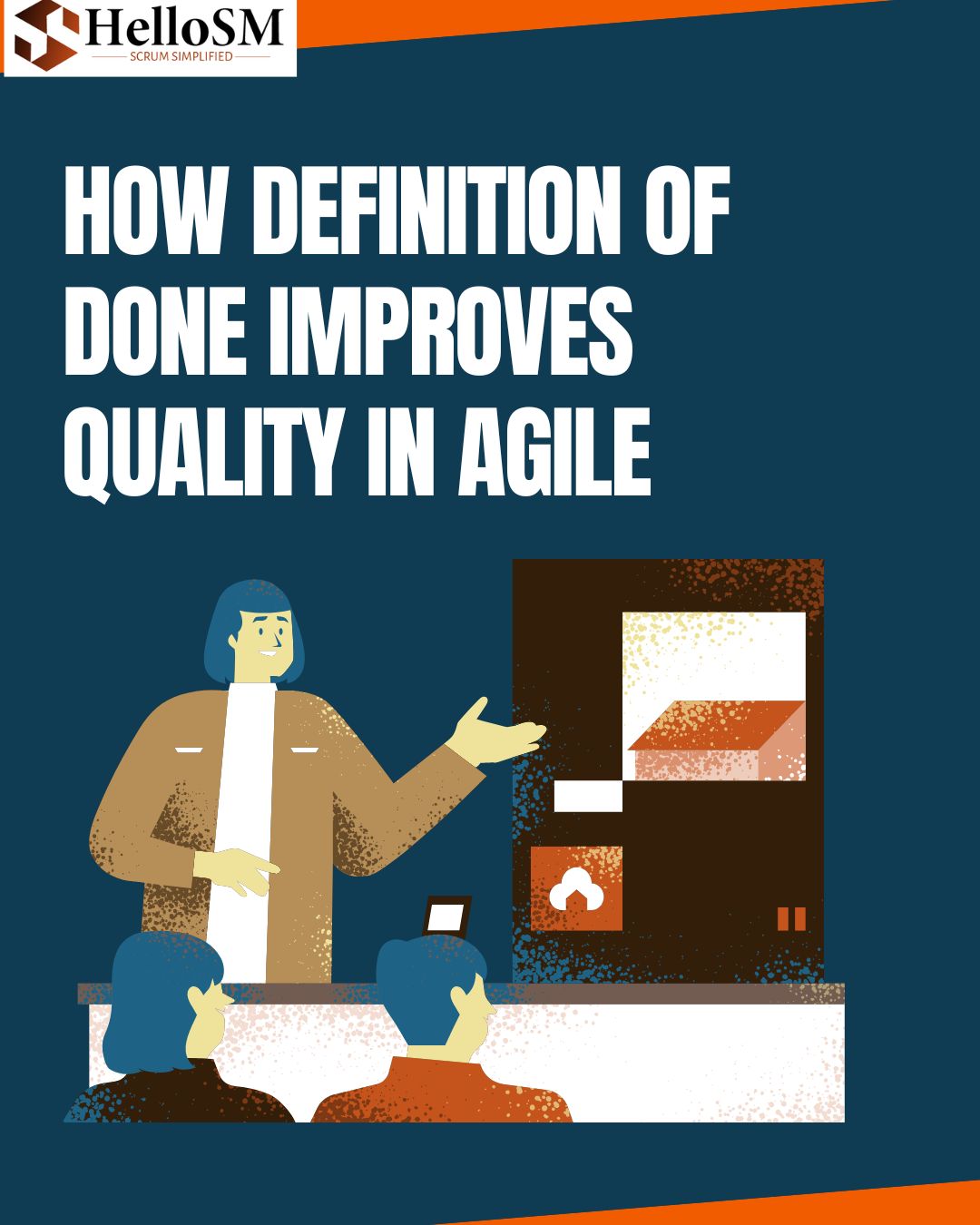If you’ve ever worked in an Agile team, you’ve probably heard people tossing around the term “Definition of Done” (DoD). It sounds pretty simple, right? Just a checklist of what needs to be finished. But in reality, the Definition of Done is a quiet game-changer, the thin line between “almost done” and “done-done.” A strong DoD doesn’t just tidy up tasks. It shapes the quality of the product, the mindset of the team, and even how customers trust your deliverables. And when you look at it through the lens of Agile quality practices, it becomes clear: this isn’t just a process formality. It’s a promise of excellence.
What Is the Definition of Done?
In simple terms, the Definition of Done is an agreed-upon list of criteria that a product backlog item must meet before it’s considered complete.
It could include things like:
- All code reviewed and tested
- Documentation updated
- User stories accepted by the Product Owner
- No known critical bugs
But here’s the trick, it’s not universal. Every team defines “done” differently, depending on their product, standards, and maturity level. A startup might focus on functionality, while a fintech or healthcare product team might emphasize security, compliance, and performance testing. When everyone knows exactly what “done” means, the team avoids confusion, last-minute chaos, and rework.
How It Impacts Quality of Work?
Let’s get real here, many Agile teams think they’re being fast when they skip quality checks. But what actually happens? They end up delivering half-baked work that bounces back in testing or worse, in production. A clear Definition of Done prevents that mess. Here’s how:
Builds Shared Accountability
When everyone agrees on what “done” means, quality stops being one person’s job. Developers, testers, designers, all share responsibility. It removes the classic “I thought QA would handle that” excuse.
Encourages Consistency
Without a DoD, each developer might interpret “done” differently. One might write tests, another might skip them. The Definition of Done creates consistency in deliverables across sprints — so the team doesn’t just move fast, they move together.
Improves Predictability
When quality standards are known and practiced sprint after sprint, the team becomes more predictable. Stakeholders gain confidence because every release maintains the same bar of quality.
Reduces Technical Debt
Ever pushed a story just to “close it” and promised to fix it later? That’s how technical debt creeps in. The DoD stops this from becoming a habit. It demands every piece of work be production-ready, tested, and reviewed, today, not someday.
Promotes Continuous Improvement
Over time, the Definition of Done itself evolves. Teams keep refining it based on retrospectives and feedback. Maybe they start adding performance benchmarks or UX validation steps. This ongoing improvement keeps raising the quality bar.
Agile Quality Practices That Complement the DoD
Now, the DoD doesn’t live alone. It thrives best when combined with solid Agile quality practices, like: Test-Driven Development (TDD), Writing tests before coding helps ensure functionality matches user expectations. Continuous Integration, Frequent code integration detects errors early. Pair Programming, Two brains catching bugs before they even exist. Automated Testing, Makes regression testing faster and more reliable. Code Reviews, Peer reviews catch logic gaps, style issues, and missed cases. Sprint Retrospectives, A safe space to reflect and enhance processes. When all these practices are tied back to the Definition of Done, quality doesn’t just happen, it becomes baked into every sprint.
Scrum Training & Certification: Why It Matters
Understanding and implementing the Definition of Done properly often needs the right mindset, something formal training helps you develop. If you’re considering an Agile project management course in India or a Scrum certification, you’ll dive deep into real-world scenarios where DoD directly affects delivery outcomes.
Institutes like HelloSM, one of the best Scrum training institutes in India, don’t just teach you the theory, they help you apply it in real projects. From defining DoD to managing Sprint quality metrics, you’ll learn how to keep both speed and excellence in balance. If you’re based in Hyderabad, you’ll also find that HelloSM is recognized as a top training institute in Hyderabad, especially for professionals aiming to become Certified Scrum Masters or Product Owners. Beyond the certification, you’ll gain the ability to coach teams on why “done” truly matters.
Difference Between Done and Done-Done
Here’s a small truth, many Agile teams proudly mark stories as “done,” only to reopen them days later because of missed validation or unclear acceptance criteria. That’s where a proper Definition of Done saves you. It keeps your deliverables reliable, your velocity realistic, and your product quality consistent. It’s not a checkbox list, it’s a commitment.
So, next time your team rushes to close a sprint, take a breath and ask: Is this really done, or just “done for now”?
Frequently Asked Questions
What is the Definition of Done in Agile?
It’s a shared checklist of conditions that must be met before a backlog item is considered complete, including testing, documentation, and review.
How does the Definition of Done improve quality?
It ensures all work meets agreed quality standards, reducing defects, miscommunication, and rework.
Who creates the Definition of Done?
The Scrum Team collectively defines it — developers, testers, and the Product Owner — to make sure it’s realistic and valuable.
Can the Definition of Done change?
Yes! Teams regularly refine it during retrospectives as they mature or adopt new practices.
How is DoD different from Acceptance Criteria?
Acceptance criteria apply to a single user story, while the Definition of Done applies to all stories in a sprint or release.
Why choose HelloSM for Scrum training?
HelloSM is recognized as a top training institute in Hyderabad and among the best Scrum training institutes in India, offering hands-on courses that help you apply Agile principles effectively in real projects.

